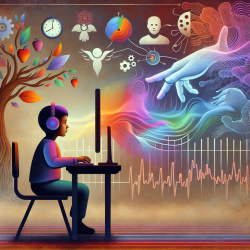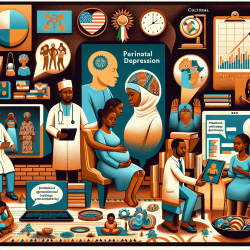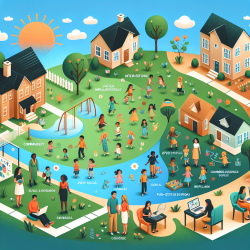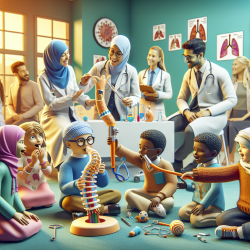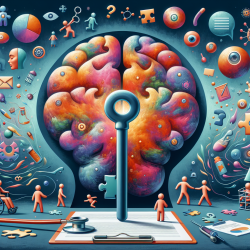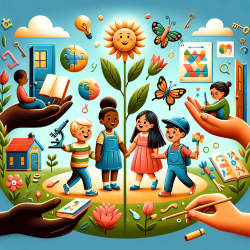Introduction
In the realm of speech-language pathology and online therapy, the quest for enhancing prosocial behavior in children is paramount. A recent study titled "Self–other overlap and interpersonal neural synchronization serially mediate the effect of behavioral synchronization on prosociality" provides valuable insights into how synchronization can foster prosocial behavior. This blog explores how practitioners can leverage these findings to improve their therapeutic approaches.
The Power of Synchronization
Behavioral synchronization, the alignment of actions between individuals, has been shown to enhance social bonds and prosocial behaviors. The study utilized functional near-infrared spectroscopy (fNIRS) to observe the neural mechanisms involved in synchronization. The findings revealed that synchronization not only increased prosocial behavior but also enhanced interpersonal neural synchronization (INS) and self-other overlap.
Key Findings
- Participants engaged in synchronized tasks exhibited higher levels of prosocial behavior compared to those in control groups.
- Interpersonal neural synchronization, particularly in the right dorsolateral prefrontal cortex, was a significant mediator of prosocial behavior.
- Self-other overlap, where individuals perceive themselves and others as more interconnected, played a crucial role in enhancing prosociality.
Implications for Practitioners
For speech-language pathologists and online therapy providers like TinyEYE, these findings offer a pathway to enhance therapeutic outcomes. By incorporating synchronization activities into therapy sessions, practitioners can potentially foster greater prosocial behavior in children. Here are some practical applications:
- Incorporate Synchronized Activities: Design activities that require children to synchronize their actions, such as clapping games or rhythmic exercises. This can help build social bonds and enhance prosocial behaviors.
- Focus on Self-Other Overlap: Encourage activities that promote empathy and understanding, helping children see themselves in others. This can be achieved through role-playing or collaborative tasks.
- Utilize Technology: Leverage online platforms to create interactive and synchronized experiences for children, fostering a sense of connection and shared goals.
Encouraging Further Research
While this study provides a robust framework, further research is encouraged to explore the nuances of synchronization in diverse settings and populations. Practitioners are urged to contribute to this growing field by documenting and sharing their findings from implementing synchronization techniques in therapy.
Conclusion
The intersection of behavioral synchronization and prosocial behavior presents a promising avenue for enhancing therapeutic outcomes in children. By understanding and applying these principles, practitioners can create more effective and empathetic therapy environments. To delve deeper into the original research, please follow this link: Self–other overlap and interpersonal neural synchronization serially mediate the effect of behavioral synchronization on prosociality.
